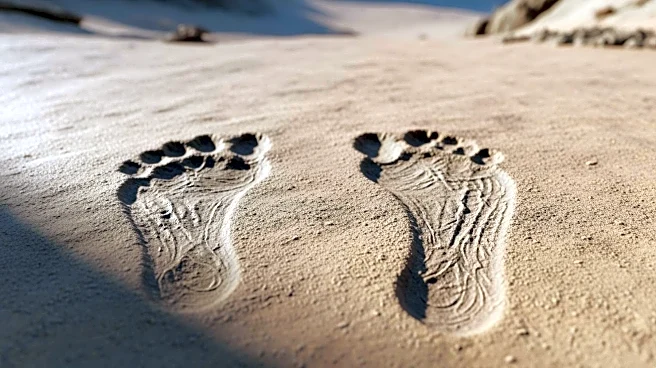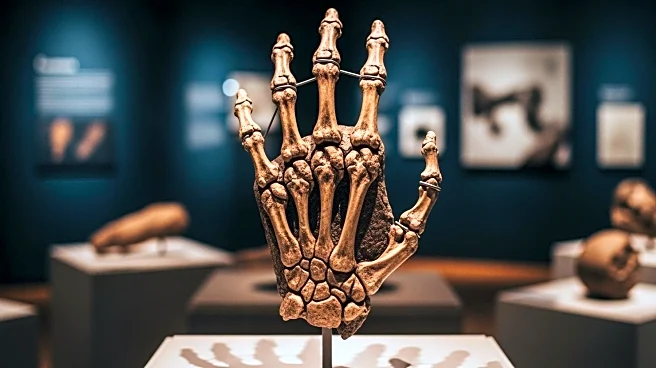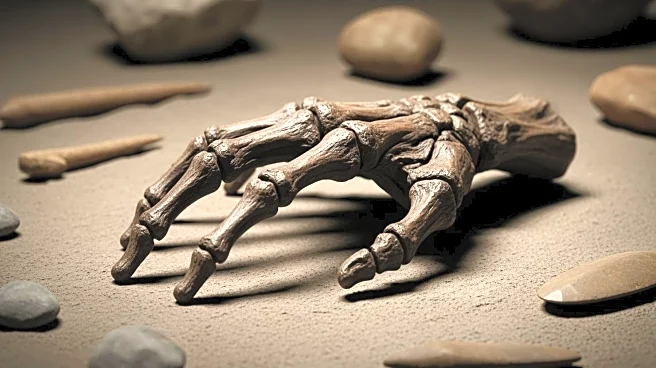What's Happening?
A recent discovery at Lake Turkana in northern Kenya has unveiled a significant finding in the study of human evolution. Scientists have identified footprints that indicate two extinct species of human ancestors,
Homo erectus and Paranthropus boisei, lived side-by-side approximately 1.5 million years ago. The footprints were preserved in a layer of wet silt, which was quickly buried by fresh sediments, allowing for the preservation of delicate shapes. This discovery provides a near real-time record of the movement and interaction of these species. The footprints were found a few meters below a volcanic ash bed, which has been dated to about 1.52 million years ago, providing a precise timeline for the coexistence of these species.
Why It's Important?
This discovery is crucial as it provides concrete evidence of the coexistence of two different hominin species in the same habitat, which was previously only hypothesized. The findings offer insights into the ecological dynamics of early human ancestors, including how they might have shared resources and habitats. The presence of both species in the same area suggests potential interactions and competition for resources, which could have influenced their evolutionary paths. This research enhances our understanding of human evolution, particularly in terms of how different species adapted to their environments and interacted with each other.
What's Next?
The study opens up new avenues for research into the ecological interactions between different hominin species. Future research may focus on understanding the specific behaviors and adaptations that allowed these species to coexist. Additionally, the use of advanced 3D imaging technologies in this study sets a precedent for future archaeological investigations, potentially leading to more detailed reconstructions of ancient environments and behaviors.
Beyond the Headlines
The discovery of these footprints not only provides a snapshot of ancient life but also raises questions about the social structures and survival strategies of early hominins. The ability to coexist in the same environment suggests a level of ecological partitioning, where different species might have exploited different resources or niches to minimize direct competition. This finding could lead to a reevaluation of how early human ancestors interacted with their environment and each other, offering a more nuanced understanding of human evolution.













